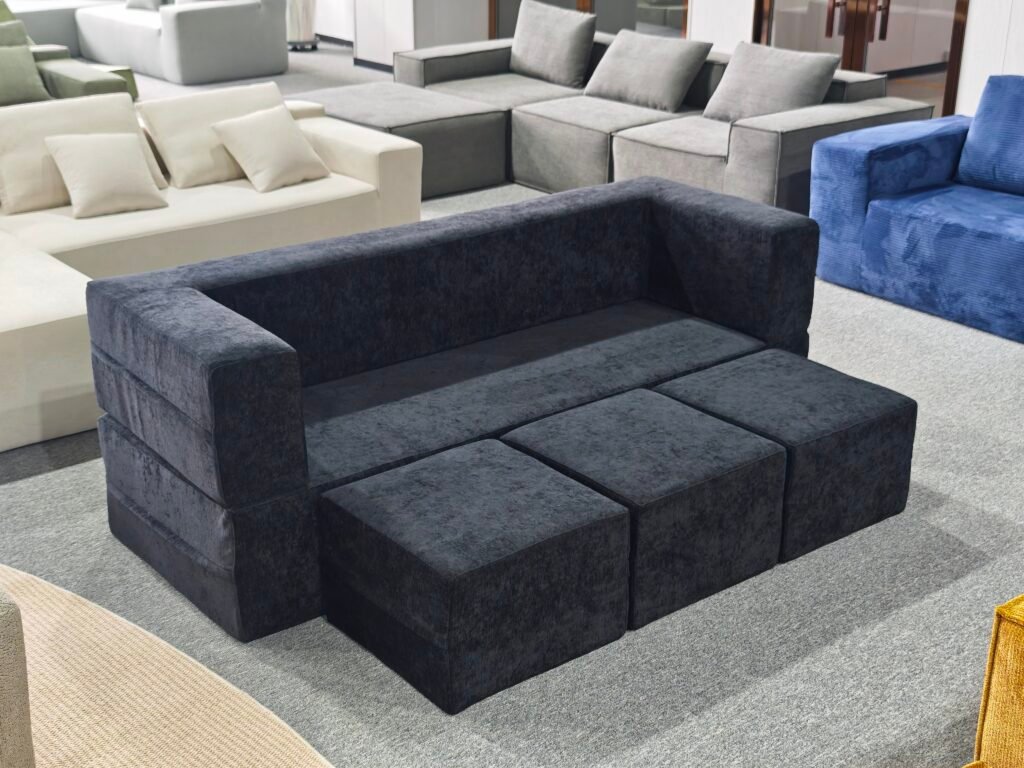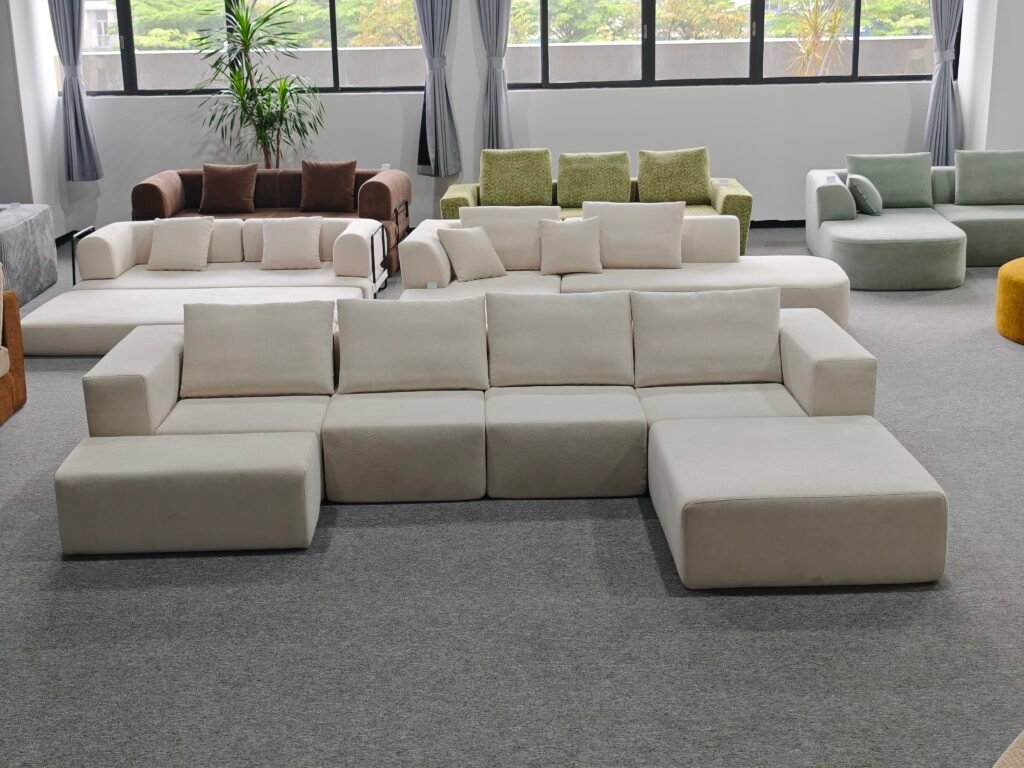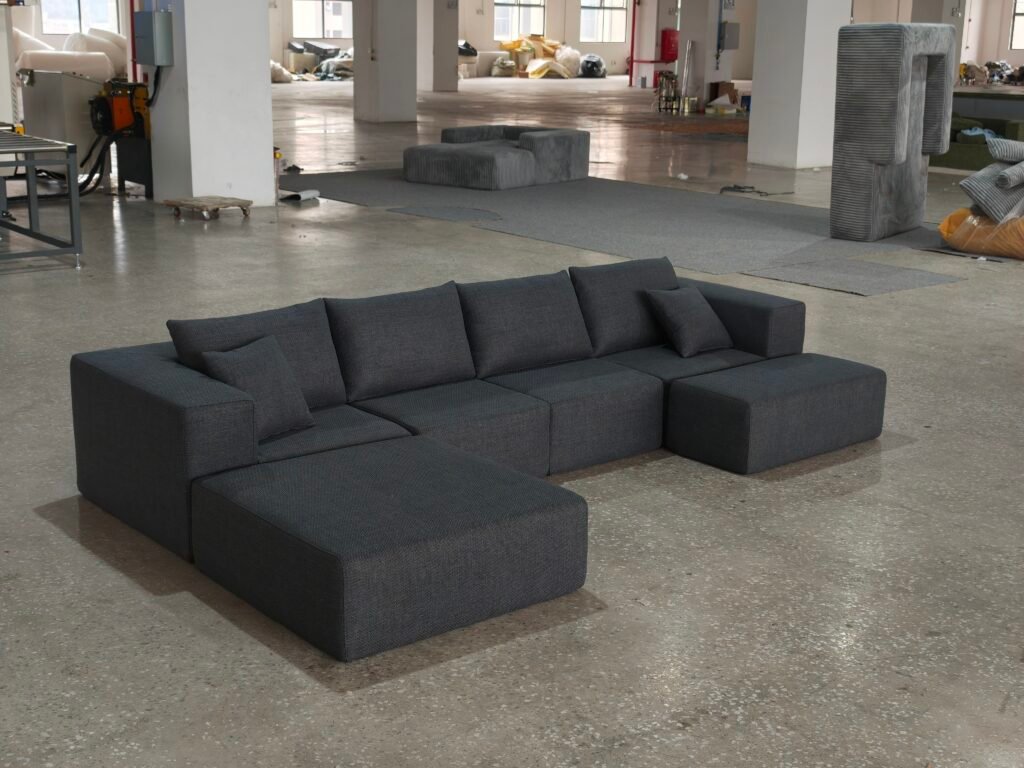When dealing with compressed sofas, particularly in modular compressed sofa factories such as modular-sofas.com, attention to every detail in production, packaging, and logistics is critical. One essential but often overlooked aspect is the sanitization of compressed sofa wraps — the plastic or protective covers that tightly encase sofa modules during compression, transportation, and storage. Proper sanitization of these wraps before reuse is vital for maintaining hygiene standards, protecting customer health, and enhancing sustainability through safe reuse.
This guide thoroughly explores the importance of sanitizing compressed sofa wraps, the recommended materials and chemicals for sanitization, step-by-step procedures, safety considerations, and sustainable practices. Whether you are a compressed sofa factory operator, logistics staff, or vendor planning to reuse packaging materials, this article will serve as a comprehensive reference to help you implement reliable sanitization protocols.


Importance of Sanitizing Compressed Sofa Wraps
Manufacturing and shipping compressed sofas involve multiple touchpoints where dust, microbes, allergens, and contaminants can settle on packaging materials. Given that compressed sofa wraps come into direct contact with the fabric-covered foam modules, cleanliness prevents cross-contamination, preserves fabric integrity, and enhances customers’ confidence.
In modular compressed sofa factories, wraps are often reused on subsequent batches to reduce plastic waste and lower costs. Without proper sanitization, reused wraps can harbor bacteria, mold, or residual chemicals that may degrade the sofa’s quality or represent health risks. Sanitization also aligns with current heightened consumer awareness of hygiene, especially post-pandemic, making it a best practice for reputable compressed sofa manufacturers.
Furthermore, reusing sanitized wraps supports sustainability goals by reducing plastic consumption and landfill waste, important for factories aiming to operate eco-consciously. Therefore, sanitation practices should be standardized and integrated into quality control systems.
Types of Compressed Sofa Wraps Commonly Used
Compressed sofa wraps generally fall into a few main categories, depending on material composition and factory processes:
- Polyethylene (PE) Shrink Wrap Films: These films are flexible, transparent, and provide an airtight seal around sofa modules after heat shrinking. Widely used for vacuum-packaged compressed sofas.
- Polypropylene (PP) Woven or Laminated Bags: Often used for additional dust protection or outer wrapping, these offer robustness and slight breathability.
- Plastic Protective Stretch Wrap: Elastic plastic film used to tightly bind multiple modules or secure components during shipping.
- Biodegradable and Recyclable Wraps: Factories increasingly adopt eco-friendly wrap materials composed of biodegradable plastics or recycled content; they require careful sanitization to avoid degradation.
Understanding the wrap material is important since it determines the appropriate cleaning agents and methods that won’t damage the wrap, compromise its mechanical properties, or leave harmful residues.
Key Objectives of Sanitization
Sanitization of compressed sofa wraps before reuse aims to:
- Eliminate microbial contaminants including bacteria, fungi, and viruses.
- Remove dust, dirt, oils, and adhesive residues accumulated during handling and storage.
- Preserve the mechanical strength and elasticity of the wrap material after cleaning.
- Ensure safety for human contact by avoiding toxic chemical residues.
- Maintain compatibility with the compressed sofa’s upholstery and foam materials once wrapped again.


Recommended Cleaning and Sanitization Methods
Multiple sanitization methods are effective for different wrap types. Selecting a method depends on the nature of the wrap material, factory capabilities, environmental considerations, and health safety regulations.
| Sanitization Method | Suitable Wrap Type | Advantages | Considerations |
|---|---|---|---|
| Manual Cleaning with Detergent | PE shrink films, PP bags, stretch wraps | Simple, low cost, effective at dust and grime removal | Requires drying; minimal microbial kill without disinfectant; labor-intensive |
| Chemical Disinfection (Spray or Wipe) | PE and PP wraps where chemical exposure is safe | High efficacy in microbial control; quick action | Requires safe chemical selection; ventilation needed; drying phase mandatory |
| Ultraviolet (UV-C) Light Sanitization | Clear shrink wraps, smooth surface plastics | Chemical-free; penetrates surface to kill microbes | Limited penetration; requires exposure time; wrap positioning critical |
| Steam Cleaning | PE and some laminated wraps | High microbial kill rate; removes residues | Heat sensitive wraps might deform; energy consumption high |
| Ozone Treatment | Industrial wrap batches | Strong disinfectant; penetrates well | Potential degradation of plastics; requires strict safety controls |
| Combined Methods | Often optimal — detergent wash + disinfection | Comprehensive cleaning with broad-spectrum sanitation | Complexity and production time increase |
Suitable Sanitizing Agents for Compressed Sofa Wraps
Choosing effective yet safe chemicals is crucial for cleaning and sanitization. Key agents used include:
- Mild Detergents: Non-ionic or neutral pH detergents that remove grease, dust, and light soils without damaging plastics.
- Isopropyl Alcohol (70%) or Ethanol (70%-80%): Quickly evaporates, ideal for disinfecting surfaces, and effective against a broad range of microbes. Using higher concentrations can damage plastic.
- Quaternary Ammonium Compounds (Quats): Widely used in disinfection, safe for many plastics, effective against bacteria and viruses.
- Hydrogen Peroxide (3%-6%): Environmentally friendly disinfectant; decomposes into water and oxygen; contact time required for efficacy.
- Diluted Bleach Solutions (Sodium Hypochlorite): Very effective microbial disinfectant, but can degrade or discolor some plastics and requires thorough rinsing.
- Eco-Friendly Disinfectants: From natural plant extracts or biocides, gaining popularity for minimal environmental impact and safety.
Factories often tailor chemical selection to avoid wrap material deterioration, ensure worker safety, and comply with environmental regulations.
Step-by-Step Guide to Sanitizing Compressed Sofa Wraps
Cleaning and sanitizing compressed sofa wraps before reuse can be achieved through the following generalized protocol:
- Inspect Wraps: Begin with a detailed visual and tactile inspection to identify visible dirt, tears, or damage. Damaged wraps should be discarded to avoid compromising packaging integrity.
- Pre-Cleaning: Remove loose dust and debris by gently shaking, vacuuming with a soft brush attachment, or wiping with a dry cloth.
- Washing: For reusable wraps, immerse or wipe with a mild detergent solution to remove oils, adhesives, and stubborn grime. Use a soft brush or sponge to avoid scratching. Rinse thoroughly with clean water to remove soap residues.
- Disinfection: After cleaning, apply disinfectants appropriate to the wrap material via spray, wipe, or immersion. Ensure even coverage but avoid saturation that could deform thin plastic films.
- Drying: Place wraps in a well-ventilated area or use air blowers to dry them completely. Avoid direct heat exposure which might cause warping.
- UV-C Exposure: Optionally, expose wraps to UV-C light chambers for additional microbial inactivation, especially for sensitive or biodegradable wraps.
- Quality Check: Once dry and sanitized, perform a quality check for integrity before repackaging the sofa modules.
- Storage: Store sanitized wraps in a clean, dust-free environment, using protective covers or sealed containers to maintain hygiene until reuse.
Safety Considerations and Worker Protection
Sanitization operations must comply with occupational safety regulations:
- Provide personal protective equipment (PPE) including gloves, eye protection, and masks to workers handling chemicals.
- Ensure adequate ventilation, especially when applying volatile disinfectants such as alcohol or bleach solutions.
- Employ training for proper chemical handling, spill response, and waste disposal.
- Use only approved sanitizers and follow manufacturer guidelines on dilution and contact times.
- Avoid cross-contamination by segregating clean and dirty wraps.
- Implement periodic monitoring of sanitization effectiveness using microbial testing if possible.
Environmental and Sustainability Impacts
Compressed sofa factories benefit from reusing sanitized wraps by reducing plastic waste and minimizing the environmental footprint related to packaging production and disposal.
By establishing validated sanitization protocols, factories contribute to a circular economy, reduce packaging costs, and align with eco-conscious consumer preferences.
However, overuse of harsh chemicals or energy-intensive procedures should be balanced with sustainability practices. Using biodegradable wraps combined with gentle but effective sanitization can optimize environmental outcomes.


Technologies and Innovations in Wrap Sanitization
Leading compressed sofa factories like modular-sofas.com often integrate advanced sanitization technologies:
- Automated Washing & Disinfection Lines: Machines that clean, disinfect, and dry plastic wraps in continuous processes.
- UV-C Chambers: Installed for non-chemical microbial decontamination, especially useful for delicate biodegradable wraps.
- Ozone Generators: For batch treatment of wrap stock, ensuring sterilization without chemical residues.
- Eco-Friendly Detergents and Disinfectants: Custom-formulated chemical blends optimized for plastic integrity and sustainability goals.
- Microbial Monitoring Sensors: To ensure sanitization cycles achieve required pathogen reduction.
Practical Tips for Factories on Wrap Management
- Maintain detailed logs of wrap sanitization procedures for quality control and auditing.
- Rotate wrap batches and track usage to avoid overruns and prolonged reuse that could compromise wrap quality.
- Train staff regularly on techniques and safety to minimize human error.
- Use color-coded or marked wraps to distinguish between sanitized and awaiting-cleaning stock.
- Engage with suppliers to source wrap materials optimized for repeated sanitization with minimal degradation.
Comprehensive Comparison Table of Sanitization Methods for Compressed Sofa Wraps
| Sanitization Method | Effectiveness Against Microbes | Impact on Wrap Material | Environmental Impact | Operational Complexity | Recommended Wrap Types | Key Precautions |
|---|---|---|---|---|---|---|
| Manual Cleaning with Detergent | Moderate (removes dirt but limited microbial kill) | Low (gentle on plastic) | Low (depends on detergent) | Low | PE shrink film, PP woven/laminated | Needs drying; potential residue if improperly rinsed |
| Chemical Disinfection (Alcohol, Quats, H2O2) | High viral, bacterial kill | Medium (may cause plastic aging or discoloration over time) | Medium (chemical runoff considerations) | Medium | PE, PP; avoid harsh chemicals on biodegradable wraps | Proper PPE required; ventilation mandatory |
| UV-C Light Sanitization | High on surface microbes | Very low (no contact or chemicals) | Low | Medium to High (setup cost) | Transparent shrink films, smoother surfaces | Ensure full exposure time; safety shields needed |
| Steam Cleaning | Very high | Medium to high (heat sensitivity of wraps) | Medium (energy usage) | Medium | Heat resistant PE, not recommended for thin films | Risk of deformation; monitor temperature |
| Ozone Treatment | Very high | High (plastic degradation risk) | Medium to High | High | Industrial wrap batches | Strict safety training; limited exposure |
| Combined Methods (Wash + Disinfect) | Very high | Medium | Medium | High | Most types | Higher operational effort; balances effective cleaning |
Final Thoughts on Sanitizing Compressed Sofa Wraps
Sanitizing compressed sofa wraps before reuse is an essential practice aligning with hygiene standards, customer safety, sustainability ambitions, and economic efficiency within compressed sofa factories. Selecting appropriate materials, sanitization methods, and safety procedures ensures wraps remain effective in protecting and preserving sofa quality across multiple use cycles.
As the compressed sofa industry grows and evolves, factories committed to innovation and environmental responsibility will increasingly adopt sophisticated sanitization processes, improving product hygiene and customer trust.
By following guidelines and integrating best practices outlined here, manufacturers like modular-sofas.com demonstrate leadership in delivering high-quality compressed sofas wrapped in clean, safe, and eco-friendly packaging — a critical competitive edge in today’s furniture market.